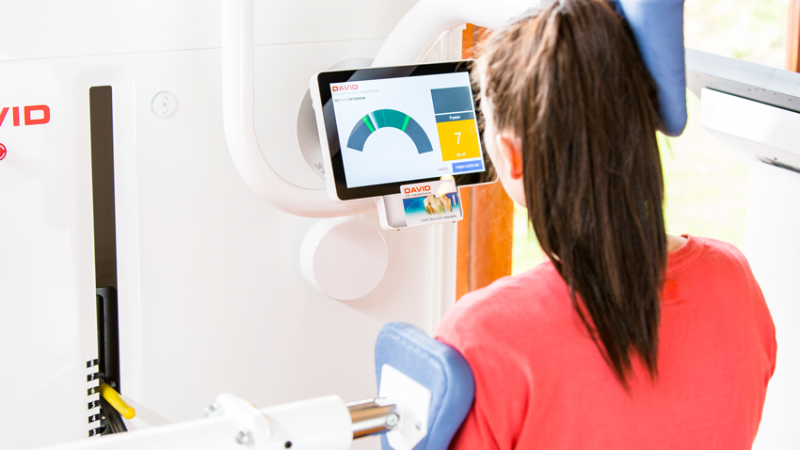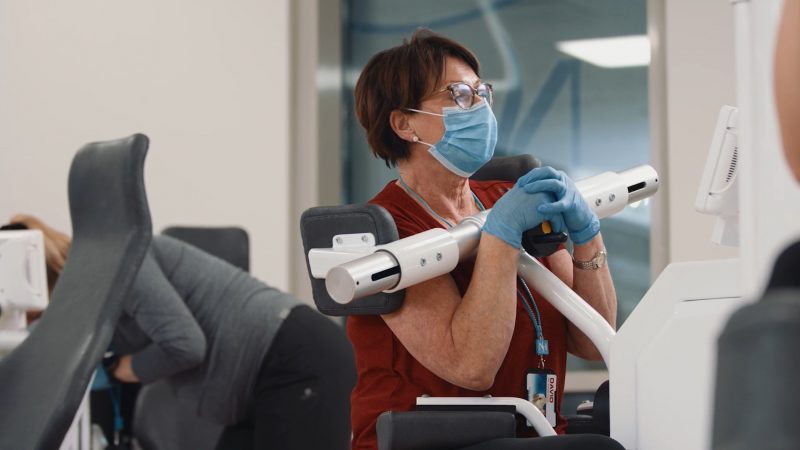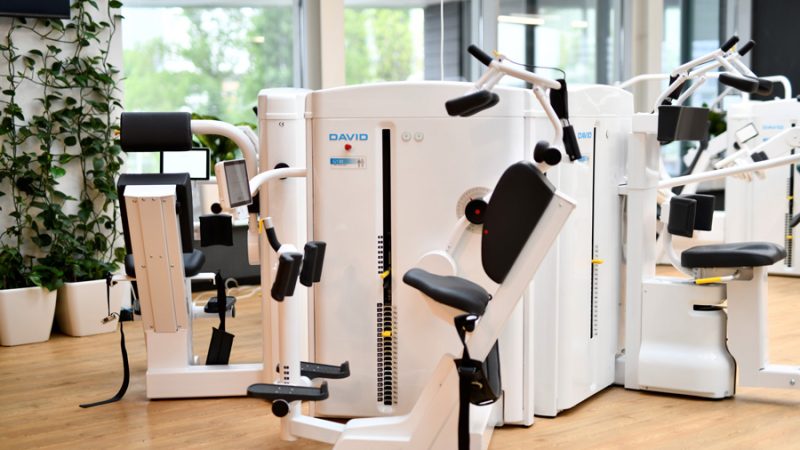Company prevention programs with DAVID devices
Company prevention programs are designed to benefit both workers and employers. Emphasis is placed on testing and training capabilities which is made possible by the David technology. This allows for individual graphical reporting for the employee and analyses on absenteeism and risk inventory for employers.
Our reference pages include a few of the company prevention programs that utilize David technology worldwide. Due to company policies, information is rather restricted to prevent misuse of sensitive information. Nevertheless, a general understanding of running company prevention programs and a look at a case example provide a clear overview of what makes a company prevention program successful.
How to make company prevention programs successful?
There is a growing demand for business prevention programs for employees in hospitals, factories, offices, and government institutions to name a few. This is due to an aging population, an unhealthy lifestyle, and diseases such as diabetes, back and neck complaints, obesity, and cardiovascular disease. In turn, a need for preventive measures becomes critical.
“A company prevention program should prevent employee health problems and decrease related costs to the employer.”
An employer has an important signaling function in this respect that fits within the social objectives of the company. This signaling function is not only important for the employee but also for the employer. Insight into the vitality of the employee enables the employer to predict absenteeism and reduce employee health risks which incur sick days and costs. Here, the main goals of the company prevention program are to prevent health problems for employees and decrease related costs to the employer.
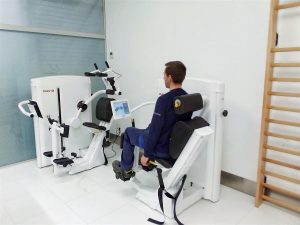 A worker at the Mercedes Benz factory exercises on DAVID’s G110 Back extension device.
A worker at the Mercedes Benz factory exercises on DAVID’s G110 Back extension device.
How does company prevention work?
1. Analysis of workability
Based on medical questionnaires, an overview is made of the employees’ workability. An individual score is shared with the employee and a report at the group level is shared with the employer.
2. Analysis of the physical condition of employees
Through a mobility and strength test on the DAVID devices, an overview is made of the physical condition of the employee. The values are compared with normative reference values that can give a prediction of the overall physical condition and possible physical health risks. An individual score is shared with the employee and a report at the group level is shared with the employer. Employees are categorized according to a traffic light model. The degree of intervention depends on this score.
3. Intervention
The intervention takes place on the work floor or a nearby location where (depending on their health risk) the employee trains preventively 1 or 2x per week on the DAVID devices under the guidance of a certified DAVID instructor. Any other experts in the field of vitality can be added to the intervention process.
There a variety of ways of how to set up and a run a company prevention program. This includes the company purchasing and owning the devices, leasing devices from a distributor, and purchasing physiotherapy services through them. Athlon KOOP has directed several successful company prevention programs in Spain.
Athlon’s representative, Joseba Narbaiza explains that “the company prevention program can be managed several ways and we always strive to do what is best for the company”. For example, “leasing agreements are a favorable way to organize company prevention because they do not require the company to invest immediately, and their employees can begin ongoing treatment programs”.
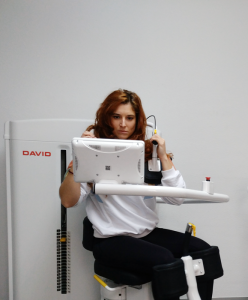 An employee exercises with the DAVID G120 Back Rotation device at the Renault Factory.
An employee exercises with the DAVID G120 Back Rotation device at the Renault Factory.
Company prevention programs use EVE software for outcome analysis and reporting
There are several successful company prevention programs currently operating in factories across Spain. The main model is simple. Employees leave their work station for 10-15 minutes to visit the factory’s physiotherapy clinic. Here they meet the physiotherapist who supervises their treatment program as they exercise on the DAVID devices. The employee’s RFID card is shown to the devices, which then automatically adjust the seat height and the device screen shows the correct weight load and range of motion for the individual. The employee completes his or her training program and promptly returns to work. With this model about 4 to 5 employees visit the clinic at a time while the physiotherapist supervises training.
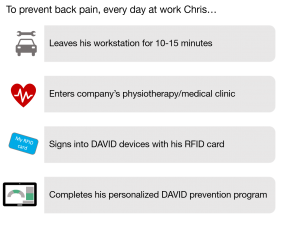
The EVE software platform tracks and stores all training data so that the physiotherapist can analyze any employee’s training information at any time. This is also important part of the program’s overall analysis and outcome reporting. “For any company, the program outcomes are important to track and provide evidence that the prevention program works” says Joseba. With the EVE software platform, outcome analysis and reporting can be done on an individual level, group level, or even company level.
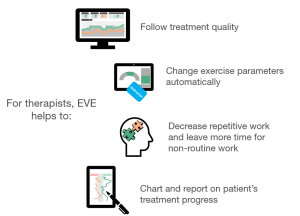
Overall health of employees increase and sick days decrease
Successful company prevention programs are currently operating at Spanish factories of IVECO, Mahle Behr, Renault, and Mercedes Benz. Due to security restrictions little can be reported on the outcomes of these prevention programs. However a closer look at outcome reporting done at the Mercedes Benz company prevention program shows the benefits it has on overall employee health and reduction of employer costs.
During the year-long program, physiotherapists created prevention programs with the DAVID technology. The employees completed a 16-week program, visiting the clinic once a week. The program included G110 back extension and G130 back flexion DAVID devices. Each visit lasted 10 to 15 minutes.
The outcome reporting shows a 7-10% average increase in back extension isometric strength.
Initial and final testing was done on employees to have data on all spine mobility and isometric strength. The outcome reporting is case sensitive and cannot be entirely published but available information points to improvement in isometric strength. The outcome reporting showed a 7-10% average increase in back extension isometric strength.
Positive employee feedback on company prevention program
Questionnaire feedback from employees is also vital to understand the prevention program effects. 950 workers were asked about their health perception after the program.
91% of the workers felt that the program was effective in reducing back pain and 95% wanted to continue with the DAVID program. Over 50% of workers reported overall better health upon program completion.
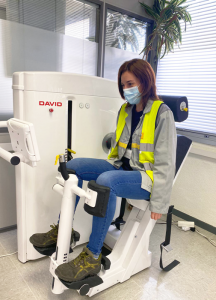 A Renault factory worker exercises on the DAVID G110 Back Extension device.
A Renault factory worker exercises on the DAVID G110 Back Extension device.
Medical technology + full commitment = Successful company prevention
The Mercedes Benz factory case highlights the benefits company prevention programs can have on both the individual and company level. The formula to a successful company prevention program significantly depends on the technology being utilized and the commitment of both employer and employee.
A successful company prevention program requires proper medically certified technology and full commitment.
Medically certified devices are key to proper prevention and training programs. If an employer fails to invest in proper equipment and technology, employees may suffer due to improper training that does not correctly target the right muscles. With the DAVID Spine Solution, all devices are medically certified and ensure targeted exercise, proper movement, and a progressive treatment program that adjusts automatically. These features make a DAVID company prevention program medically safe and effective. However, the technology is simply not enough.
The commitment of both employee and employer is essential to making a company prevention program successful. Workers must be motivated to complete the treatment program and employers must be willing to invest in the proper medical technology and support. Here, the employers commit to ensuring the health and safety of their employees.
Without full commitment from both parties, a company prevention program is set up to fail and will not provide useful training for employees or cost reduction for employers. Therefore, a successful company prevention program requires proper medically certified technology and full commitment.

 Malaysia
Malaysia 






















